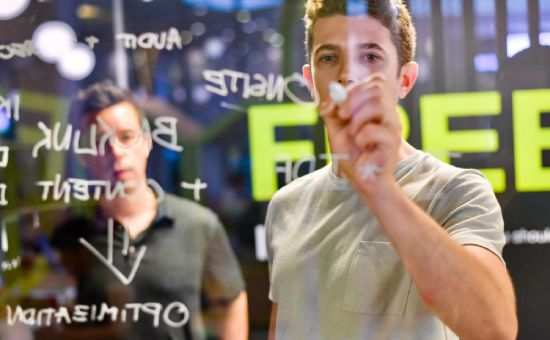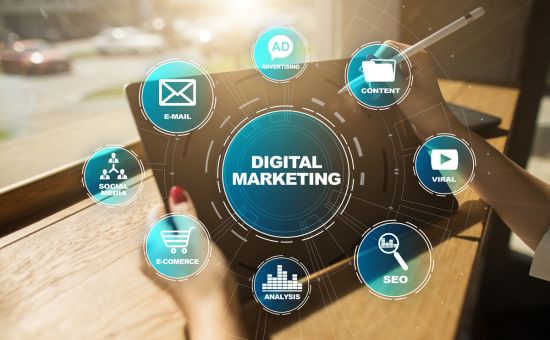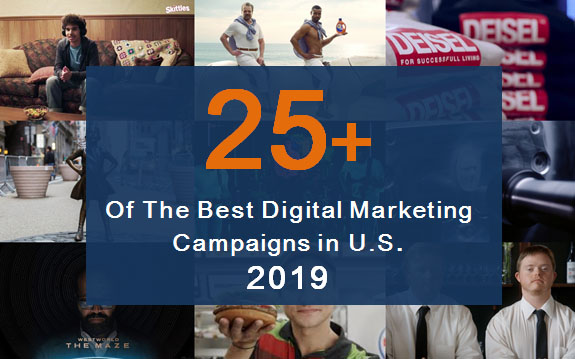10 Influencer Marketing Trends to Watch Out for in 2019
Influencer Marketing | Mar 14, 2024
Influencer marketing is booming and brands are dedicating more resources to influencer marketing because it really works. There is a continued widespread adoption of influencer marketing indicates that the channel is becoming an integral part of the marketing mix and is not just a passing fad. An extensive deep-dive study analyzed over 2M Instagram feed posts that included #ad hashtags during 2018 showed that Instagram influencer marketing grew by over 39% year-over-year.
Another study conducted by Linqia, nearly 4 in 10 of marketers plan to increase their influencer marketing budget. The study also showed also that the majority of marketers plan to spend anywhere from $25,000 to $100,000 on influencer marketing.
If you want to go where the people are, you need to be active online. The influence of marketing influencers has been steadily growing since the last few years, and now, just a few decades later, it is a major marketing channel for a bulk of marketers on the planet.
In this article, we explore the top influencer marketing trends you should know or prepare to master in 2019.
#1. Instagram May Be Peaking
Instagram is still currently the #1 social media platform in terms of influencer marketing. We have seen impressive growth and popularity of Instagram as a social network. Indeed, it is now the #1 network of choice for influencer marketing campaigns, with 79% of firms consider Instagram important for their influencer marketing campaigns.
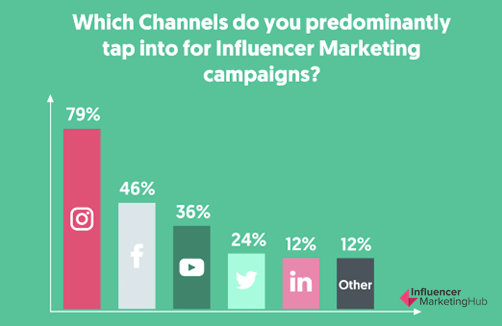
The Most Important Channels for Influencer Marketing in 2019
#2. The Fashion Industry Keeps Its Growing on Instagram
When tracking all sponsored posts on Instagram, the fashion clearly takes the throne site in the influencer marketing industry. And when categorizing each sponsored feed post by companies and industries on Instagram, lifestyle and fashion ranked the top. With a quarter of all sponsored posts revolving around this topic, fashion brands are the most active industry on Instagram when it comes to investing in influencer marketing.
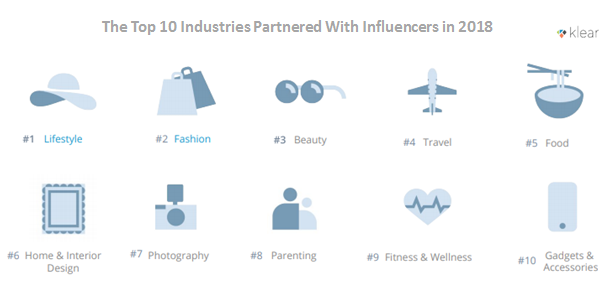
The Top 10 Industries Partnered With Influencers in 2018
#3. Sponsored Content Will Be Disclosed
The disclosure of sponsored content will become a standard and will play a significant role in contributing to the professionalization of the influencer marketing industry.
In 2018, Some German influencers started labeling all of their content as advertisements, regardless of whether organic or sponsored, out of fear of legal steps against them. This strategy keeps them on the save side from but it misses the point and works against the idea of disclosure regulations: Ensuring transparency for users if content originated from a brand-influencer collaboration vs. organic content.
That’s why in 2019, clear-cut regulations on a national and international level are a must.
#4. Influencer Marketing Campaigns Are Going Up to Be Run In-House
More than three-quarters of brands said that they run their influencer campaigns in-house, with just 23% opting to use agencies for their influencer marketing campaigns. As a result of that, many of these in-house campaigns will use available tools, like influencer platforms to help streamline the process. This will be especially so for influencer selection. 58%of firms admit to using tools developed in-house to execute their influencer marketing campaigns.
It worth to be mentioned that many brands prefer to use agencies when working with micro-influencers as the agencies are more experienced at working with influencers at scale.
The same study conducted by Influencer Marketing Hub revealed that 320 additional influencer marketing platforms and agencies came into existence in 2018. It will be interesting to see if more brands and firms choose to work with influencer agencies over the next few years or run their own campaigns in-house.
#5. Podcasts Are the New ‘Ear of Influence’
More and more marketing influencers start to tap into the potential of podcasts. This medium not only guarantees reach but it’s also an excellent way for influencers to share more profound thoughts, advice, and opinions with their audience on a personal level.
In 2019, podcasts are well and truly back in the fashion industry, presenting a whole host of new opportunities for advertisers and brands. Also, it seems – influencers. Podcasts work just as good for the B2B industry as for B2C.
#6. Micro-Influencers Is Going Up to Making an Impact
Micro-influencers continue to dominate the space posting the highest number of sponsored posts on Instagram in 2018, with 84% of sponsored posts posted by micro-influencers.
Unlike mega influencers and celebrities who have thousands or even millions of followers, micro-influencers are more likely to interact and engage with their followers more frequently and are considered as more relatable and authentic.
Micro-influencers tend to be more knowledgeable about their niche. Furthermore, their followers are more likely to trust their recommendations. Micro-influencers are also more affordable than hiring a celebrity as an influencer or brand ambassador.
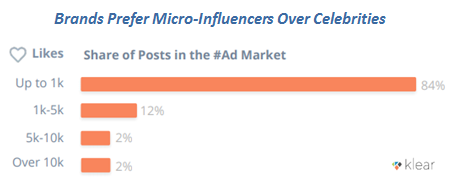
Micro-Influencers Preference by Brands Over Celebrities
#7. The Fight Against Fake Followers Reached New Level
Influencers sometimes use bot-backed services and automation to increase the number of likes their posts get. Some influencers increase their followers based on the rule of reciprocity, a “follow for follow.” Instagram fake and fraudulent influencers are a dangerous issue for advertisers and a serious threat to their marketing budgets.
Brands need to vet and look beyond the raw number of followers and likes and evaluate the quality of influencers’ engagement with their followers. Influencer marketing software such as ‘InfluencerDB’ helps brands to detect influencers with bot followers and invaluable audiences. It’s important to mention that taking the right steps for spotting fake influencers, will make fewer companies waste their marketing budgets in 2019 by collaborating with fraudulent accounts.
#8. Virtual Influencers Will Increase
The use of carefully curated avatars as influencers is one of the emerging trends to keep an eye on. This trend was kicked off by the production of the internet’s first “fictional it girl” and virtual influencer, named Miquela Sousa or Lil Miquela. She’s a model living in Los Angeles, aged 19-year-old, and her Instagram feed is filled with numerous posts highlighting her fashionista outfits.
Also, she has released a number of her own songs on Spotify and has grabbed more than 1.5 million followers on Instagram.
she’s one of the most followed influencers for ‘Ugg’ footwear brand, who enlisted her for its month-long 40th-anniversary campaign.
Her virtual existence is drawing both ire and awe as marketing trend watchers try to judge if they love or hate this new development in influencer marketing.
#9. Influencer Marketing Is About Storytelling
The best influencer campaigns are crafted when a brand collaborate with an influencer to generate unique content that really engages the audience. Storytelling connects with the target audience and helps brands sell more products.
The influencer needs to catch their followers’ attention in a compelling way to really resonate with your audience. Video content is a natural fit to promote a story come alive and resonate with followers.
#10. Gaming Influencers Are on the Rise
The gaming industry is growing rapidly to dominate the sector of handheld technology entertainment. E-sports got a significant uplift in 2018. The live-streaming video platform ‘Twitch’ grew to become a greater focus of attention in the influencer marketing industry.
Marketers tap the full potential of Twitch’s reach as well as Twitch influencers’ popularity. This makes a compelling argument for why brands should invest in gaming influencer marketing in 2019.

